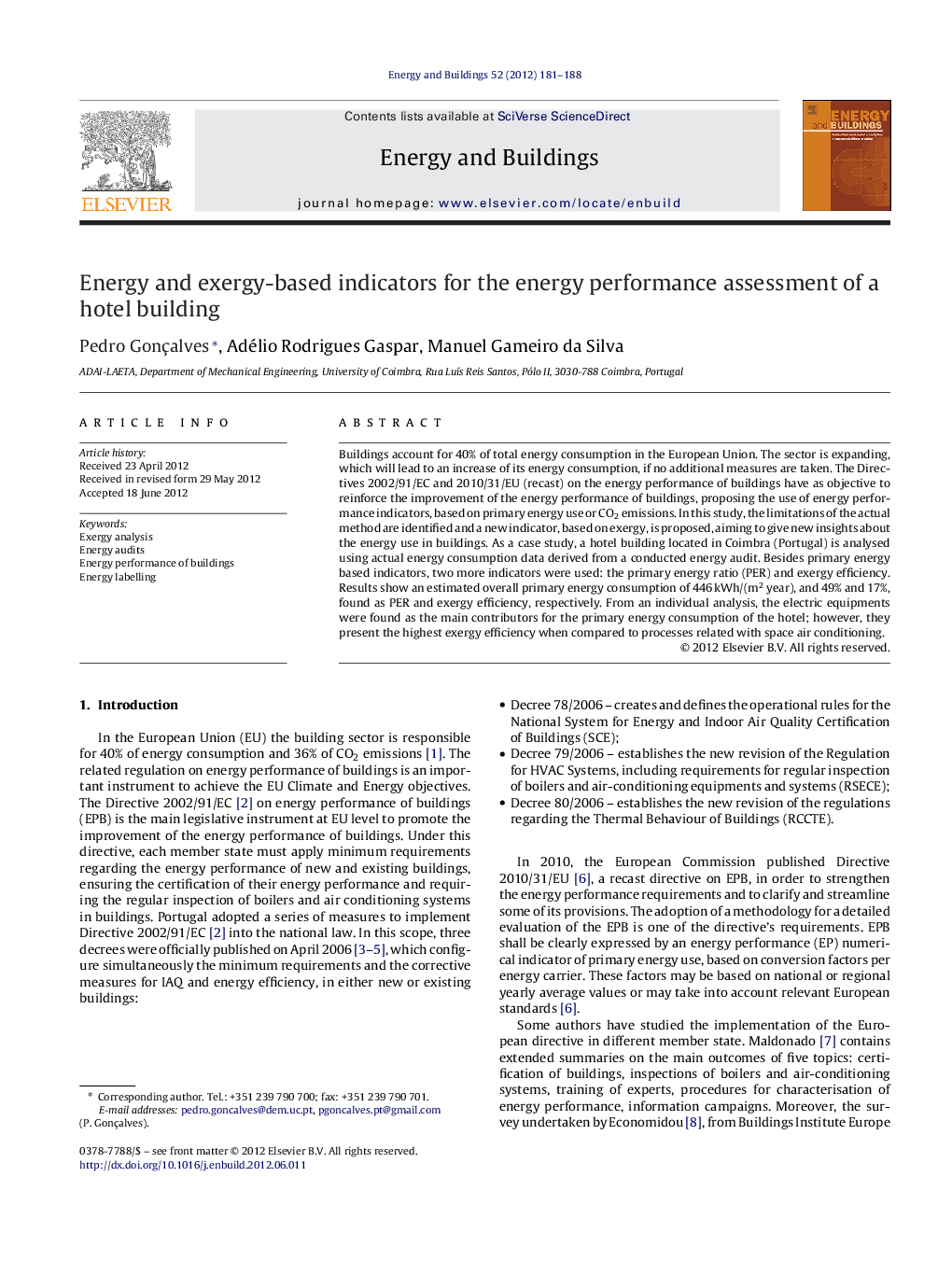| Article ID | Journal | Published Year | Pages | File Type |
|---|---|---|---|---|
| 263802 | Energy and Buildings | 2012 | 8 Pages |
Buildings account for 40% of total energy consumption in the European Union. The sector is expanding, which will lead to an increase of its energy consumption, if no additional measures are taken. The Directives 2002/91/EC and 2010/31/EU (recast) on the energy performance of buildings have as objective to reinforce the improvement of the energy performance of buildings, proposing the use of energy performance indicators, based on primary energy use or CO2 emissions. In this study, the limitations of the actual method are identified and a new indicator, based on exergy, is proposed, aiming to give new insights about the energy use in buildings. As a case study, a hotel building located in Coimbra (Portugal) is analysed using actual energy consumption data derived from a conducted energy audit. Besides primary energy based indicators, two more indicators were used: the primary energy ratio (PER) and exergy efficiency. Results show an estimated overall primary energy consumption of 446 kWh/(m2 year), and 49% and 17%, found as PER and exergy efficiency, respectively. From an individual analysis, the electric equipments were found as the main contributors for the primary energy consumption of the hotel; however, they present the highest exergy efficiency when compared to processes related with space air conditioning.
► Analyzing hotel building based on actual energy data obtained from an energy audit. ► Comparing primary energy ratio and exergy efficiency indicators. ► Finding the cooling space as the lowest energy efficient end-user of the building. ► Having the related electric users the highest exergy efficiency of the building.
